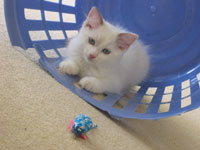It would seem that the greater population needs a refresher course in the fine art of shopping trolley etiquette. When you’re at the supermarket and pushing a trolley around, from now on please consider yourself like a 4WD on the road. Just like driving a 4WD, you need to be aware of your surrounding space and show a little consideration to other drivers.
Following is a short list of things to consider when you’re next pushing around a shopping trolley.
- Walk with the flow of other shoppers. You wouldn’t drive into oncoming traffic in your car – so don’t do it in the supermarket.
- If you need to stop for something in an aisle, take notice of where your trolley is. Most supermarket aisles aren’t very wide, so when you leave your trolley on a 45° angle – it is a hassle for other shoppers to get past.
- Don’t take your trolley into an area where you can see it is congested. Contrary to popular belief, you are allowed to separate yourself from your trolley. No one is going to steal a trolley full of food which you haven’t paid for yet, in a supermarket full of that same food.
- Don’t let your child steer the shopping trolley, I know you think it is cute but my heels don’t.
- When exiting an aisle, you really need to give way to the other shoppers on that aisle already.
While we’re in the shopping environment, you might as well take notice of these other gems:
- Organise yourself, make a list of things you need before you get to the supermarket. Honest, it’ll save you time and save everyone else thinking you’re an unorganised twat.
- Where appropriate, take a number and patiently wait to be served.
- I know it surprises you, but you’re fully loaded shopping trolley doesn’t fulfill the requirements of ‘express‘.
You are now equipped to piss off your fellow shoppers less.
